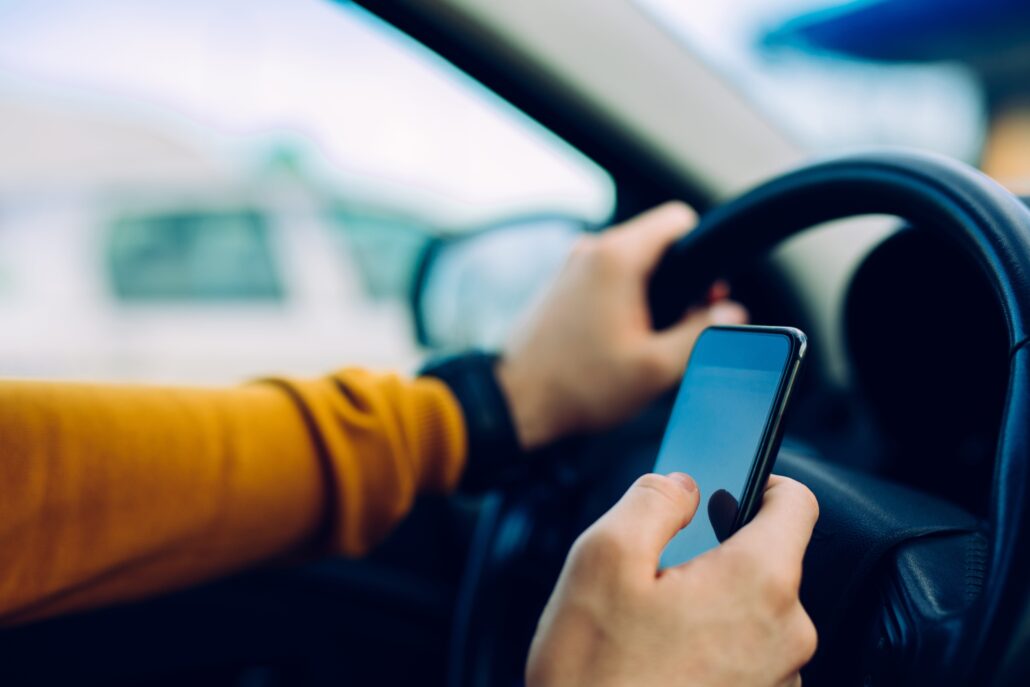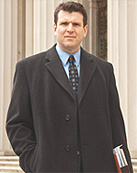Every driver engages in distracted driving at some point or another. Still, it doesn’t make it safe or acceptable.
Certain distractions are more prevalent than others. Regardless, driving while distracted is one of the most common ways to cause an accident.
If you suffer injuries in an accident due to distracted driving, a Bronx car accident lawyer can prove the other party’s negligence to help secure fair compensation.
What is Distracted Driving?
Distracted driving is one of the most dangerous driving behaviors.
Driving requires a person’s full physical and mental attention. When a driver allows themselves to become distracted, they’re putting themselves and others on the road at risk.
Distracted driving occurs when a driver's attention is on something other than the task at hand.
Nowadays, many distractions exist. From texting to music, anything can easily become a distraction. But all it takes is one slight distraction to cause an accident that changes your life.
Distracted Driving Statistics are Eye-Opening

Many factors can contribute to an accident, from speeding to tailgating to mechanical issues and dangerous roads.
Still, distracted driving is one of the most common causes of car accidents. Not only can a distracted driving collision cause extensive property damage, but it can also result in severe injuries to the victims involved. Additionally, dangerous driving is to blame for thousands of accident-related fatalities yearly.
In one recent year alone, 3,522 victims died in collisions involving distracted driving. Within 10 years, over 32,000 deaths resulted from distractions on the road.
Many injuries and deaths due to distracted driving are preventable had the negligent driver driven responsibly. Still, distracted driving remains a problem to this day.
The Three Categories of Driving Distractions
Distracted driving is such a problem that there are now three broadly recognized categories of driver distractions: visual, manual, and cognitive.
All three impact drivers differently, but every distraction can easily result in a collision. Even worse, some drivers become so severely distracted by a combination of the three that accidents are almost inevitable.
Visual Distractions
Driving 101: Keep your eyes on the road.
While every driver is given this common-sense advice at the beginning of their journeys, it makes little to no impact on many people. Keeping your eyes on the road while operating a vehicle is the bare minimum, but many drivers feel they can multitask and drive without looking straight ahead.
Texting
Texting is a substantial problem for drivers.
You’ve likely seen campaigns throughout the years concerning texting and driving and heard the statistics. One of the most popular and shocking texting and driving statistics involves the average distance a driver drives while looking down at their phone.
Usually, drivers take their eyes off the road for about five seconds at a time. While that doesn't seem like a long time, it is when you're driving. At 55 miles per hour, a driver taking their eyes off the road for five seconds can drive the equivalent of an entire football field. A lot can happen in those five seconds.
Texting not only distracts drivers visually, it manually distracts them.
Because texting and driving is such a concern, many new vehicles contain safety features to address these distractions. Instead of reading texts, a vehicle's hands-free system can read the texts aloud and allow a driver to speak their response.
Even with this new technology, not every driver likes it or uses it. Additionally, with so many older vehicles still on the roads, not every driver has access to such features.
Emails
Reading and sending emails can be just as dangerous as texting and driving.
The primary difference is that many emails are more involved, requiring more reading and longer responses. Therefore, reviewing and crafting emails can be even more dangerous than texting.
Emailing also counts as a visual and manual distraction.
GPS
The days of having to map out your drives and print out directions are long gone. Nowadays, everyone has a GPS on their cellphones, vehicles, or both.
While drivers no longer have to plan their drives and map out directions before hitting the road, it's still better than using the GPS mid-drive. Inputting addresses and selecting the best route takes your eyes off the road and your hands off the steering wheel.
It's best to know where you're going ahead of time and have your GPS verbally give instructions rather than looking at the screen for every turn-by-turn direction.
Manual Distractions
Along with keeping your eyes on the road, new drivers also learn to keep both hands on the wheel; historically, at 10 and 2. In recent years, the guidance has changed to keep your hands at 9 and 3 o'clock positions on the steering wheel.
Even with this valuable advice, many drivers still think they can use their hands for everything other than their steering wheel.
Things happen quickly on the road, so keep both hands ready and available in case you need to maneuver your vehicle in a different direction.
Although many experienced drivers lose the habit of driving with both hands on the wheel at all times, keep both hands available at the very least.
Grooming
Grooming involves everything from doing your hair and putting on makeup to shaving. If you can think of it, some drivers have done it behind the wheel, regardless of how outrageous it may seem.
More than ridiculous, grooming uses a driver's eyes and hands simultaneously, and some drivers are daring enough to take both hands off the wheel to do it.
Eating
Eating while driving – everyone has done it. Usually, someone is running late and figures it is a good idea to eat in their car while they commute.
Aside from eating often requiring both hands, eating while driving can make a mess. Many drivers instinctively look for something to clean up the mess, which can take both eyes and hands away from driving.
At this point, everyone knows smoking is dangerous to your health. It also makes driving more dangerous, taking hands and attention from the road. Additionally, smokers are always at risk of burning themselves, which can distract a driving person and cause an accident.
Smoking
At this point, everyone knows smoking is dangerous to your health. It also makes driving more dangerous, taking hands and attention from the road. Additionally, smokers are always at risk of burning themselves, which can distract a driving person and cause an accident.
Cognitive Distractions
Although visual and manual distractions are the most common, cognitive distractions are still rather common.
A cognitive driving distraction is anything that allows a driver’s mind to wander and lose focus on the task of safe driving.
Talking
A person can hold a conversation while driving and still drive safely. However, depending on who the driver is talking to and the context, a conversation can cause distraction and, therefore, a collision.
Talking on the phone or with passengers in the car can undoubtedly distract someone. This is especially true when the conversation triggers the driver's emotions, as emotions themselves can distract drivers. For instance, if a conversation makes a driver angry or they start crying, it can affect their driving.
Daydreaming
Daydreaming involves pleasant thoughts that distract a person’s attention from the present. The definition says it all.
Everyone is guilty of daydreaming, as it's a normal occurrence. It's easy to let your mind drift and think about something more enjoyable, especially when driving and stuck in traffic. For this reason, daydreaming is one of the more common cognitive distractions.
Impairment
Alcohol and drugs cause cognitive impairment, meaning a driver can lose concentration on the road. Drugs and alcohol affect the way the brain works. Impaired drivers cannot think as clearly, and their reaction times are much slower. Drunk driving is one of the leading causes of accident-related injuries and fatalities. This is why the law prohibits operating a vehicle while impaired.
Signs a Driver is Engaging in Distracted Driving
Usually, tell-tale signs identify a distracted driver:
- Swerving between lanes
- Driving erratically
- Running stop signs and/or red lights
- Tailgating
- Driving too fast or too slow
- Braking suddenly
- Failing to use turn signals as they should
When a person’s driving is particularly alarming, get their vehicle’s information and contact law enforcement. Unsafe driving caused by distractions can suddenly cause accidents that result in serious harm.
What Age Range is Most Likely to Engage in Distracted Driving?
Anyone at any age can drive distractedly. Nonetheless, teen and young adult drivers are more likely to drive while distracted and cause collisions.
In a recent year, a greater percentage of drivers aged 15 to 20 were distracted while driving than drivers of older age groups.
Distracted driving among this age group is even more alarming because drivers this age are barely learning to drive. Becoming a seasoned driver takes much time and practice. Mixing inexperience with distraction is truly a recipe for disaster.
Additionally, according to statistics, young drivers who admitted to texting and emailing while driving were also more likely to report other dangerous behaviors, including:
- Failing to wear a seatbelt
- Driving while under the influence of alcohol
- Riding in a vehicle driven by a drunk driver
This isn’t to say older drivers are not just as likely to drive while distracted. Still, the added factors associated with younger drivers make it more likely for one to cause a collision.
Are There Ways to Prove a Distracted Driver Caused an Accident?
Showing a distracted driver caused your car accident can substantially strengthen your claim and recover compensation for your losses and injuries.
Evidence plays a crucial role in distracted driving collision claims. Some of the evidence you can use can include witness statements, police reports, and surveillance or traffic camera footage.
Additionally, if cell phone use might be the culprit, the party’s cell phone records can indicate whether they were using their phone at the time of the accident.
Proving the other driver’s actions caused your accident can help get you one step closer to obtaining the monetary recovery you need and deserve.
Establishing a Distracted Driver’s Negligence
Car accidents are usually the result of either negligent or intentional actions. Building your case requires you to prove certain details, depending on the cause of your collision.
Distracted driving is a type of negligent driving behavior.
Therefore, when the other party’s negligence results in your accident, you must establish:
- Duty: Drivers owe others on the road a duty of care to drive carefully
- Breach: Distracted driving results in a breach of this duty
- Causation: There is a direct link between distracted driving and your accident
- Damages: You suffered damages as a result of your collision
Proving negligence is one of the most essential keys in a collision case. You can establish the other party's negligence and proceed with your compensation claim with the right approach and strong evidence.

Car Accident Attorneys are All Too Familiar with Distracted Driving Crashes
You don't have to take on your case alone after a distracted driving accident. A distracted driving car accident lawyer can handle your case from inception to completion, working diligently to get you the most favorable outcome on your behalf. Most car accident lawyers have seen the devastating effects of distracted driving firsthand, as they have represented clients who suffered injuries in such crashes.
Pursuing a claim allows you to get compensation and justice for the other driver's wrongdoing. Don't wait to consult a skilled accident attorney for free today.



